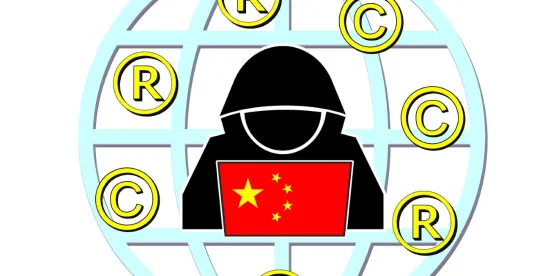On May 13, 2025, China’s National Intellectual Property Administration (CNIPA) in conjunction with the Ministry of Science and Technology, the Ministry of Industry and Information Technology, the State-owned Assets Supervision and Administration Commission of the State Council, the State Administration for Market Regulation, and the Chinese Academy of Science released the Guidelines for the Construction and Operation of Patent Pools (专利池建设运行工作指引).
A translation follows. The original text can be found here (Chinese only).
Chapter 1 General Provisions
Article 1 These Guidelines are formulated to guide and strengthen the high-quality construction of patent pools, guide and support the scientific establishment, rational layout, standardized management and efficient operation of patent pools, better operate the role of patent pools, promote the transformation and application of patents, promote fair and orderly competition in the industry, and accelerate the cultivation and development of new quality productivity.
Article 2 Patent pool refers to a patent application model in which two or more patent holders entrust one of them or a third-party operation and management organization through an agreement to jointly operate the patents held in a certain technical field, and carry out cross-licensing, one-stop licensing and other businesses and related services.
Article 3 Patent pools have the following main functions:
(I) Integrate patent resources, reduce patent licensing transaction costs, and improve patent licensing and use efficiency.
(II) Promote the industrialization and application of patent technology, expand the scale and benefits of patent industrialization, and accelerate the transformation of innovative achievements into real productivity.
(III) Carry out diversified operation services, improve corporate patent compliance awareness and risk prevention level, and optimize the ecological environment for industrial innovation and development.
Article 4 The construction and operation of patent pools shall follow the following principles:
(I) Market-oriented principle. In accordance with the laws of the market economy, a business operation model that conforms to the characteristics of the industry and the needs of enterprises shall be established to ensure the market-oriented operation and sustainable development of the patent pool.
(ii) The principle of interest balance. The legitimate rights and interests of patent licensors and licensees shall be protected, the balance between licensing rates and industrial profits shall be taken into account, and the due interest returns of various entities in the whole process from innovation investment to implementation of results shall be guaranteed.
(iii) The principle of openness. All types of qualified domestic and foreign patent holders shall be supported to join the patent pool, participate in the operation of the patent pool and obtain due rights and interests, and encourage and support the market-oriented, standardized and international development of the patent pool.
(iv) The principle of non-discrimination. The licensing business shall be carried out equally for the whole society to ensure that all patent users have equal opportunities and obtain licenses in accordance with fair, reasonable and non-discriminatory rules.
Article 5 The CNNIPA shall, together with relevant departments, provide overall guidance and support for the construction and operation of patent pools. Local intellectual property management departments and relevant departments are encouraged to strengthen guidance, support and service guarantees for the construction of patent pools according to local conditions.
Chapter II Establishment of Patent Pool
Article 6 Patent pools are usually initiated and established by patent owners or patent operation management organizations with significant innovation advantages and greater industry influence in the industry, and patent owners in related fields are absorbed as members of the patent pool.
Article 7 The main links of the establishment of patent pools include:
(i) Clarify the basic positioning. The initiator shall determine the basic positioning of the patent pool, such as the expected functions, business forms, business models and development directions, based on the needs.
(ii) Determine the patent pool operation management organization. The patent pool operation management organization shall have relevant professional capabilities such as patent resource integration, operation management, consultation and negotiation, and risk response, and shall be responsible for the operation and management of the patent pool under the entrustment of the patent owner.
(iii) Formulate the charter. The initiator shall formulate the organizational charter based on the basic functional positioning of the patent pool, which mainly includes the purpose, criteria, rules of procedure, organizational structure, responsibilities and powers of the operation management organization, member joining and exit mechanism, member rights and obligations, business development model, risk prevention and dispute resolution mechanism, etc.
(iv) Screening patents to be included in the pool.
——Establish standards. The patent pool operation and management organization shall formulate fair and reasonable patent entry standards and clarify the evaluation and review mechanism for patents entering the pool.
——Application for entry into the pool. The patent owner shall submit a patent entry application to the patent pool operation and management organization and provide relevant information. For utility model and design patents, a patent right evaluation report may be required.
——Evaluation and review. The patent pool operation and management organization shall organize experts or entrust a third-party evaluation service organization to evaluate and review the patents applied for entry into the pool in accordance with the patent entry standards and determine the list of patents entering the pool.
——Signing an agreement. The patent pool operation and management organization shall sign a patent entry agreement with the patent owner to agree on the list of patents entering the pool, the rights and obligations of both parties, the method of income distribution, the entry period, the exit mechanism, confidentiality requirements and dispute resolution.
Chapter III Operation and Management of Patent Pools
Article 8 Establish a reasonable licensing fee mechanism. Patent pool members mainly obtain income through the patent pool’s external one-stop licensing. The licensing fee rate is generally determined by the initiator or patent pool operation and management organization based on the number of patents, patent value, average profit margin of related industries, price of patent products, contribution of patents to product value, stage of technology development, industry acceptance, judicial judgment results and other factors. When the patent pool determines or adjusts the licensing fee rate, it can fully communicate and negotiate with potential licensees to balance the interests of the relevant parties.
Article 9 Establish a fair income distribution mechanism. The patent pool operation and management organization may extract management fees from the operating income according to a certain proportion or charge service fees according to the agreed operating model, and determine the income distribution ratio of the patent pool members based on the patent pool entry agreement, combined with factors such as the number of licensed patents and patent contribution.
Article 10 Establish a flexible and efficient service management model. The patent pool operation and management organization may actively expand its operating business based on the needs of industrial development and the functional positioning of the patent pool, and provide value-added or public welfare services such as evaluation consultation, litigation response, negotiation, overseas risk analysis, and compliance investigation to patent pool members or other entities. Strengthen the internal management of the patent pool and establish a sound member communication and consultation mechanism.
Article 11 Establish a moderately transparent information disclosure mechanism. Encourage patent pool operation and management institutions to appropriately disclose relevant information based on the functional positioning of patent pools, or provide necessary information based on the reasonable requirements of relevant parties. For patent pools of standard essential patents, encourage patent pool operation and management institutions to timely and fully disclose information such as claim comparison tables of patents in the pool and the results of necessity examination.
Chapter IV Safeguard Measures
Article 12 Support the formulation of relevant norms and standards for the construction and operation of patent pools. Encourage patent pools that are in line with the national industrial development orientation, have standardized and efficient construction and operation, and have a significant role in promoting industrial innovation and development to report relevant information to the CNIPA on a voluntary basis. Support the exploration of the construction of patent pool information resource centers to track and publish relevant information about patent pools.
Article 13 Strengthen business training and personnel training. Encourage local government departments to organize and carry out relevant training on the construction and operation of patent pools in combination with the needs of industrial development. Strengthen the construction of professional personnel teams and encourage patent pool operation and management institutions to cultivate and introduce professional personnel with international vision and advanced management concepts. Promote the establishment of a patent pool operation and management expert team to strengthen the talent guarantee and professional support for the construction and operation of patent pools.
Article 14 Strengthen publicity and exchanges. All departments and localities should timely summarize and publicize the progress, achievements and experience of the construction and operation of patent pools, positively guide and widely popularize the concept of patent pool operation, and promote the formation of a good atmosphere conducive to the high-quality construction and operation of patent pools. Support the development of domestic and foreign exchange activities, share and absorb the successful experience of the construction and operation of patent pools, continuously strengthen international consensus, and explore and promote the formation of fair, reasonable, open, inclusive, mutually beneficial and win-win international rules for the construction and operation of patent pools.
Chapter V Supplementary Provisions
Article 15 The construction and operation of patent pools shall strictly abide by national laws and regulations, and shall not violate the Anti-Monopoly Law of the People’s Republic of China, the Anti-Monopoly Guidelines of the Anti-Monopoly Commission of the State Council on the Field of Intellectual Property Rights, the Anti-Monopoly Guidelines for Standard Essential Patents, the Provisions on Prohibition of Abuse of Intellectual Property Rights to Exclude and Restrict Competition, and the Provisions on the Administration of Patents Involving National Standards (Interim) and other relevant regulations, and shall not hinder fair competition in the market and the healthy development of the industry. Patent pool operation management agencies are encouraged to report to antitrust law enforcement agencies in advance, actively accept supervision and guidance, and ensure the compliance construction and operation of patent pools.
Article 16 Encourage and support relevant departments, local governments, social groups, industry organizations, etc. to refer to and use these guidelines in the construction and operation of patent pools.



 />i
/>i

